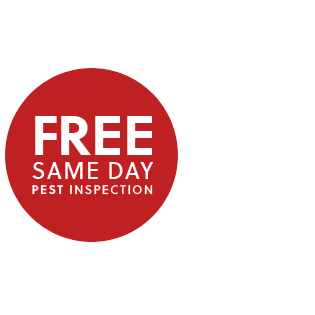Argentine ants: Third of the five most commonly encountered pests
Clark, your neighborly pest control, lawn care, and termite control expert, has been sharing a list of the five most frequently encountered pests Californians may see in or around their homes.
The list was generated from pest trend data from across the state and analyzed by Clark Pest Control’s chief pest expert and Director of Learning and Technical Services, Darren Van Steenwyk, BCE.
What pests have made it onto the list? It’s a pest who’s who, including:
- Roof rats
- House mice
- Argentine ants
- Cellar spiders
- German cockroaches
We have shared information on a pair of rodents –roof rats and house mice – but this week we shift to an insect that virtually every Californian has likely encountered: the Argentine ant.
Why are Argentine ants so populous in and around homes? Where might you encounter them in your home? What you can do to reduce your risk? Clark offers the following Argentine ant facts:
- Worker ants are 1/16-inch-long; queens are two to four times larger than workers (1/8 to 1/4 inches long). They are light to dark brown in color. They do not have a stinger at the end of the abdomen, but they can bite.
- Argentine ants prefer sweets like fruit juices, candy, and plant secretions. Removing empty soda containers and candy wrappers can reduce ant pressure. They are also attracted to organic matter, such as particles of food left out on a kitchen counter or floor.
- They will tend aphids and scale insects for honeydew – the sweet, sugary waste product excreted by these insects – much like the way farmers tend cows for milking; it’s estimated that 70 percent of an Argentine ant’s diet comes from these farming activities.
- Argentine ants will build their nests near a source of moisture – household plumbing, sinks, potted plants, and other such locations.
- These ground-nesting ants generally nest in shallow soil and will forage for food up to 200 feet from their nests. They will make use of tree branches and even utility lines to travel.
- One difference between Argentine ants and other ant species is that they will combine into massive supercolonies, sometimes hundreds of miles long. One Argentine supercolony stretches from San Francisco to San Diego!
- Argentine ants quickly become the dominant ant species, not because they’re stronger warriors – although they do a surprisingly good job taking out fire ant and carpenter ant colonies – but because they’re better organized and can get along with each other.
- All potential points of entry need to be blocked, and bridges to your house – including tree branches that touch the structure – need to be trimmed back. And because Argentine ants have a fondness for sweets, keeping surfaces and floors clean in your kitchen helps keep them away.
Why is the Argentine ant so common? Because these ants live in any soil that is moist and protected. They also can live on a wide-ranging diet. California has a relatively mild climate (without the harsh cold winters), which allows these ants to survive even when they don’t appear to be active.
Where might Argentine ants most often be encountered or noticed? In the yard, where plants are watered. Argentine ants also are often found under items that are resting on the ground, including stepping-stones, pavers, fountains, landscape cover, and piled leaves.
Is there anything you can do to reduce the risk? Manage the watering in your yard, so the soil is moist enough for the plants and landscape to live, but not overwatered. Also, clear your yard of as many items that are resting on the soil, including toys and debris. In addition, remove potential food sources in the yard, including honeydew-producing insects and any food left there from typical use.
If you are noticing an influx of Argentine ants around your home, call or text California’s trusted, friendly pest control expert, Clark, at (800) WE-NEED-YOU (936-3339) or send an email at clarkcares@clarkpest.com.
Until next time, the pest management professionals at Clark Pest Control thank you for helping to keep unwanted pests out of your home.
Clark Pest Control Public Health Statement
CLARK CARES
The number-one priority at Clark Pest Control is protecting the world where our employees and customers live, work, and play. We are closely monitoring the current coronavirus (COVID-19) outbreak, and our top priority is keeping our employees and customers safe. Our organization has had a longstanding partnership with the Centers for Disease Control and Prevention (CDC) and has spawned multiple public health and educational initiatives involving pest-related health risks. In addition to following the guidance of the CDC and the World Health Organization (WHO), we already have policies and procedures in place across our business to address issues that may arise during this outbreak and potential pandemic events.


